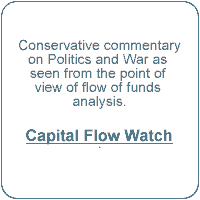 Brazilian Democracy and Emmigration
Brazilian Democracy and Emmigration
Case Study: The Brazilian Stock Market
The Return of Brazilian Democracy and Emmigration
Brazilians Vote With Their Feet
Perhaps the best measure of the supposed 'repressiveness' of the military period was the level of emigration from Brazil to the United States (which included even the 'Ministra do confisco', Zélia Cardoso de Mello).
Prior to the 1980s, few Brazilians were willing to leave their country for foreign shores. The sadness of living abroad, far from the 'terra amada', was celebrated in Gonçalves Dias' poem, Canção do Exílio, recited by millions of Brazilians, that lamented:
'Minha terra tem palmeiras,
Onde canta o sabiá;
As aves que aqui gorjeiam,
Nao gorjeiam como lá.'
During the Kubitschek years and the time of military rule, there was hope for the future.
However, by the 1990s, under 'democracy', millions of Brazilians now escaped the crime and lack of economic opportunity for a better life in the United States or Portugal.
 Even the 'Minister of Confiscation', Zélia Cardoso de Mello, emigrated to the U.S.
Even the 'Minister of Confiscation', Zélia Cardoso de Mello, emigrated to the U.S.Rio de Janeiro was no longer the 'cidade maravilhosa' of the golden years.
The streets of Deerfield Beach, Florida, are now lined with 'verde-amarelo' store fronts that are evidence of the hundreds of thousands of Brazilians now fleeing their country, joining Haitians and Cubans in seeking peace, stability, and opportunity elsewhere.
By 2005, so many Brazilians had moved to South Florida that the Brazilian Consulate in Miami had to establish an 'advance post' in Broward County to attend the needs of their citizens.
Today, except for the radical left, Brazilians in their seventies and eighties look back to the days of military rule with nostalgia, while the younger generation, who know of these years only from leftist propaganda and rewritten histories, have no idea of what they now miss in today's crime-ridden society.
The Brazilian private sector, as it always has done, moved on and created a dynamic industrial society
Of course, the Brazilian private sector, as it always has done, has moved on and continued to create one of the world's most dynamic industrial societies centered around São Paulo, where the extremely wealthy now avoid crime and traffic by taking helicopters to their offices.
The great tragedy of the years of military rule was not that a handful of terrorists suffered and died in the chambers of those who saw themselves as enforcers of civil order, but rather, as Mário Henrique Simonsen pointed out, the failure of the military to seize the opportunity and, like leaders in Singapore and South Korea, dramatically improve the educational standards of all citizens.
As a result of this failure, Brazil today is today a work half-finished, in part an advanced industrial society and in larger part, an undeveloped country, with the gap between rich and poor ever wider.
This economic and political background is an essential part of Capital Flow Analysis.
We will now examine the forces that drove the Brazilian stock market in 1971.
Capital Flow Analysis: The 1971 Bubble
The Emerging Brazilian Stock Market
Trading in equities had been dormant in Brazil for half a century after the collapse of a 19th century speculative bubble called the 'Encilhamento' (1889-1891) in the early days of the Republic.
Over the decades, there were periodic attempts to create a market. In the 1930s, the Rio Exchange moved to a lavish new building on Praça XV, fitted in marble and stained glass windows.
However, sumptuous architecture is not the secret of capital market development.
In the 1930s, Alexandre Dale and others pioneered the publication of statistics on traded securities, but these feeble stirrings of progress were short-lived.
 A 19th century bubble turned Brazilians away from stocks for half a century.
A 19th century bubble turned Brazilians away from stocks for half a century.An active market in securities did not develop.
Securities brokers, as government officials and generally lacking in entrepreneurial skills, asked for an extension of their privileges to include foreign exchange intermediation so that their benefices could be profitable.
Even in the 1950s, daily trading in equities on the Rio de Janeiro Stock Exchange, the most active Brazilian bourse, was nominal — as low as US$25,000 (dollar equivalent) on some days and averaging about US$55,000.
Following World War II, the need for capital by domestic industry gave rise to aggressive door-to-door selling of stocks. A pioneer in this effort was the American investment banker Clarence Joseph Dauphinot Jr., (1913-1995), of Deltec S.A.
Public distribution of equities is an essential preliminary step in developing a secondary market in stocks.
Equities were also distributed door-to-door during the 1950s by the Rockefeller group, International Basic Economy Corporation (IBEC), by means of the CRESCINCO mutual fund.
Development of a Trading Market
In January 1960, the first reliable index of stock prices, the Média S-N, was published by a new company, Serviço Nacional de Investimentos Ltda., popularizing investment in equities and leading to increased trading on the Rio exchange.
 In the 1950s, trading on the Rio Exchange was negligible.
In the 1950s, trading on the Rio Exchange was negligible.In the early 1960s, José Garrido Torres, then on the Conselho Nacional de Economia, and Dénio Nogueira, head of SUMOC and editor of the Fundação Getúlio Vargas review, Conjunctura Econômica, published articles proposing capital market reform.
One of the reforms suggested in these articles was the abolition of the official quasi-hereditary oligarchy that had controlled stock exchange membership since the 19th century, blocking progress and innovation
During the 1960s, the Rio de Janeiro Stock Exchange underwent reform and improvement, becoming the largest market in Latin America by 1971.

